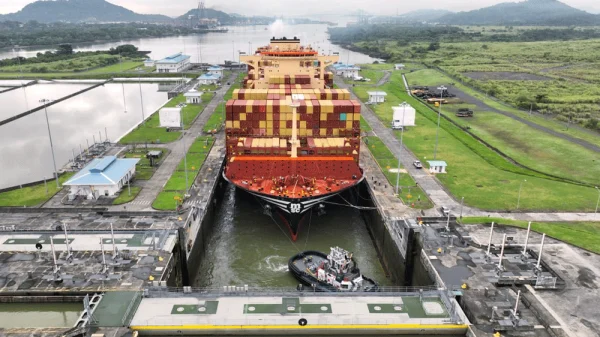Why do Taliban want to move Afghan capital?

by Vladimir Platov:
AS EVIDENCED by information coming from Afghanistan, the situation and socio-economic position in the country is deteriorating.
Every second Afghan resident is now suffering from hunger, and, in the near future, the food situation in the country may worsen further, secretary of the Russian Security Council Nikolai Patrushev said on May 27 during the fourth round of multilateral consultations on the Afghan issue. Out of more than 40 million people, approximately 95 per cent are now reported to be food insecure, and about 55 per cent are suffering from hunger.
Fleeing from Afghanistan, the western coalition abandoned more than 300,000 heavy and light small arms, more than 1,100 armoured vehicles and armoured personnel carriers, about 40 aircraft, and 40 helicopters. This creates a resource base for the unrelenting danger to the criminal situation in the country, the illegal supply of weapons both inside Afghanistan and beyond its borders.
The United States, Britain, and their allies, even after the shameful flight from Afghanistan, continue to exert a destructive influence on the development of the country. The west, despite repeated appeals from the international community, continues to block illegally frozen Afghan assets instead of sending them for humanitarian purposes and ensuring the necessary control by the United Nations. Against this backdrop, Washington’s decision to set aside half of these funds to pay compensation for the claims of relatives of the victims of the September 11, 2001 attacks, in which, as is known, the Afghan people played no part, looks especially cynical. The US and Britain are creating obstacles for Afghan financial operators to resume working with the international banking system.
Within the country, including the Taliban movement that came to power in the country — banned in the Russian Federation — the struggle intensified under these conditions, especially between confessional beliefs and Pashtun nationalism. Speaking for the continuation of the ‘Islamic revolution,’ the fundamentalists deny any border problems between Muslim peoples.
The growth in the resistance to the Taliban regime mainly comes from the National Resistance Front of Afghanistan, led by Ahmed Massoud and Amrullah Saleh. The NFSA possesses about 8,000 fighters and has intensified its anti-Taliban campaign since the spring of 2022. On May 27, NFSA representative Ali Maisam Nazari reported about local success on his Twitter page: ‘As a result of yesterday night’s clashes in Panjshir, 27 Taliban fighters were killed. The Taliban attack on the positions of the Resistance Front has been repulsed.’
In addition, serious resistance to the Taliban has begun to appear on part of the Islamic State-Khorasan Province — banned in the Russian Federation. According to various estimates, it numbers up to 2,000 militants and has already organised more than a dozen attacks since the Taliban seized power.
The number of al-Qaeda — banned in Russia — militants in Afghanistan is also growing and currently stands at about 1,000.
New or previously unknown groups in opposition to the current authorities are also emerging in the country, as former police and military personnel remain unemployed, replenishing the pool of possible resistance fighters.
The threat of insurgency from such forces in the nation is exacerbated by Afghanistan’s complex geology and mountainous terrain, offering vast areas of potential hiding places and limiting the Taliban’s ability to suppress their opponents.
Taking into account that the main backbone of the Taliban are Pashtuns, recently the objective threat to them has been concentrated not only in the northern regions of the country, but also in multi-ethnic Kabul, where the Taliban can resist the Tajiks, the second largest ethnic group in Afghanistan, and partially the Baloch.
Under these conditions, a collapse of the Pashtun-Islamic synthesis has clearly begun to show in the Taliban. Nationalists, the descendants of those who created the Afghan state, could abandon it in the name of an ethnically homogeneous country and, in the event of their defeat in Kabul, could proclaim an independent ‘Pashtunistan’ centred in Kandahar — the southern and second most populous city in the country, unleashing disintegration processes in multinational Afghanistan.
Kandahar was founded in 330 BC during the expansion of Alexander the Great under the name of Alexandria in Arachosia. The autochthonous population of the city were mainly the ancestors of modern Pashtuns. Kandahar was the capital of Afghanistan from 1747 to 1776. The mausoleum of the founder of the Afghan state and the Durrani dynasty — Ahmad Shah — is in the city. The treasure of this city recognised by Muslims is a fragment of the Prophet’s cloak located in the Da-Kerka-Sharif-Ziarat Mosque, and is one of the most valuable relics in the Islamic world, which the Emir of Bukhara, Murad Beg, presented to Ahmad Shah Durrani.
Therefore, the statement by the former vice-president of Afghanistan Amrullah Saleh about the Taliban’s intention to move the capital from Kabul to Kandahar becomes clear. Per Saleh’s explanations, Kabul, according to the Taliban’s new plans, should be turned into an administrative capital and isolated from political tensions and anti-government protests. And the Supreme Ulema Council will be located in Kandahar, in the south of the country. Elections to the country’s parliament will be held, according to Saleh, under the control of a special committee headed by Taliban leader Akhundzada. At the same time, the parliament itself will only hear the prime minister’s programme, but will not have the right to approve or reject it.
Amrullah Saleh additionally said that the Supreme Ulema Council, headquartered in Kandahar, will have the authority to appoint a new leader of the movement after Akhundzada’s death, send his proteges to the Afghan provinces as representatives of the highest political and religious power in the country.
But to move any nation’s capital is a very costly and unusual event. As a rule, it is either caused by security considerations, or by the desire to economically and politically lift up the new chosen city and the region adjacent to it. In any case, the transfer of a capital is always associated with significant financial costs for the state.
At the same time, it must be recognised that the Taliban today does not have the necessary funds for such a move. Therefore, it’s hardly worth mentioning the feasibility of such a measure by the current Afghan authorities in the near future. Unless, of course, any extraordinary events occur that urgently worsen the existence of the current authorities and their ability to manage the country from Kabul.
New Eastern Outlook, June 9. Vladimir Platov is an expert on the Middle East.























Leave a Reply